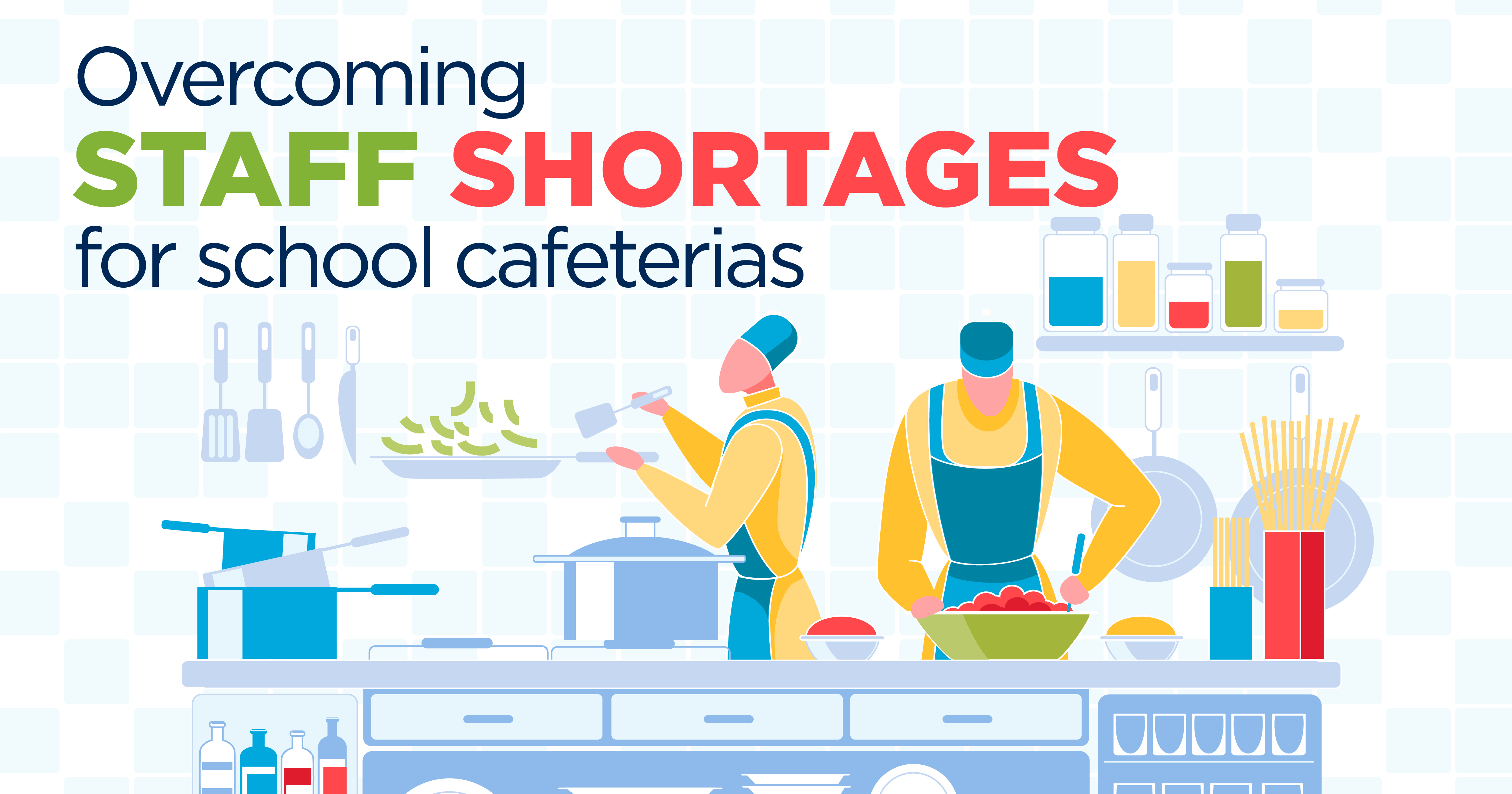As part of its ongoing commitment to community involvement, LTI Inc. has partnered with Mundy’s…
Student Self-Service: A Solution to Overcoming Staff Shortages in School Cafeterias

In bustling K-12 buildings around the country, cafeteria staff are facing situations like overseeing two computers simultaneously or managing more than one food line at once. Unfortunately, challenges like these are not isolated incidents; rather, they have evolved into symbolic representations of the broader issues overwhelming school meal programs. At the core of these difficulties lies the increasing problem of cafeteria staffing shortages.
A recent report from the School Nutrition Association highlights the widespread acknowledgment of staffing issues as a “significant challenge” across surveyed districts. The persistent shortage, rooted in the financial limitations that hinder competitive compensation, underscores the daily hurdles faced in attracting and retaining qualified staff for a demanding job.
In response, school administrations are exploring innovative solutions that not only tackle staffing issues but also revamp the overall cafeteria experience. One such pragmatic approach gaining traction is maximizing a student self-service cafeteria — a strategy aimed at not just plugging staffing gaps but also injecting a fresh vibe into the entire cafeteria scene. In this article, we’ll take a look at the benefits of self-service cafeteria design, highlighting the potential for a boost in school meal participation and the positivity it can bring to high school food court dynamics.
Benefits of maximizing a student self-service cafeteria design
The core of a self-service cafeteria lies in its design. By strategically organizing stations for fruits, vegetables, salads and beverages, schools can create an intuitive flow that reduces wait times and minimizes the need for extensive staffing. Thoughtful layout planning is crucial in optimizing space and ensuring that students can navigate the cafeteria seamlessly.
High school food courts, as vibrant hubs of student interaction, can significantly benefit from a self-service cafeteria approach. Designing these spaces to include customizable stations empowers students to make personalized choices based on their tastes and dietary preferences. The incorporation of themed or cuisine-specific areas can further enhance variety, making the high school cafeteria a dynamic and appealing environment.
The grab-and-go process
The old process of selecting entrees and sides moved at a sluggish pace, creating a potential roadblock for students. Plus, the abundance of choices sometimes overwhelms children, leading to extended wait times, especially for younger students.
For instance, on taco days, students must articulate whether they want jalapeños, salsa, queso, sour cream, etc., as their toppings. The solution? The introduction of a grab-and-go kiosk service at pass-throughs.
Now, the entrees, freshly prepared for each day, are pre-plated just before students arrive. They simply grab their preferred entrée and go, eliminating the need for them to decide on toppings at the counter and saving precious seconds during the serving process.
Empowering students to customize their entrees is crucial for the success of this service model. A toppings bar is available for students to use after selecting their pre-plated entree. The cold-well customization bar is easily adaptable to meet the day’s specific requirements.
Reduced labor costs
Reducing labor costs is a significant advantage of implementing an innovative self-service cafeteria design within a high school cafeteria. Beyond enhancing the student experience, this approach actively addresses budget constraints by leveraging automation and strategically optimizing layouts for self-service stations. Automation not only streamlines operational processes but also minimizes the need for a large workforce, resulting in substantial cost savings for educational institutions.
By embracing a forward-thinking design that emphasizes self-service, schools can redirect these saved resources toward other areas of education, such as curriculum development, extracurricular activities and other initiatives that contribute to a holistic and enriching learning environment. The benefits extend beyond the cafeteria itself, positively impacting the overall educational experience for students.
Effective strategies for self-service implementation
Technology
To align with the tech-savvy preferences of today’s students, integrating innovative technology seamlessly into a self-service cafeteria design is essential. Touchscreen kiosks or mobile apps can streamline the self-ordering process, providing students with a modern and efficient means of accessing their meals. This not only enhances the overall experience but also contributes to increased school meal participation.
Educational initiatives
Beyond the physical layout, the high school cafeteria can become a space for education. Integrate informative displays or interactive elements that promote healthy food choices and educate students about the nutritional value of various options. By blending education with dining, schools can foster a culture of mindful eating and encourage students to make informed decisions about their meals.
Student volunteer programs
Designing the cafeteria layout to accommodate student volunteer programs is a proactive way to involve students in the self-service process. Creating designated areas for student assistance during peak hours not only addresses staff shortages but also provides valuable experience and instills a sense of responsibility among the student body.
The payoff
Maximizing a student self-service cafeteria design goes beyond operational efficiency — it’s about creating an environment that nurtures autonomy, responsibility and healthy habits. Innovative self-service cafeteria design, integrating technology, education and student involvement, can transform the high school food court into a dynamic space that serves as both a culinary destination and a learning hub. This multifaceted approach not only addresses immediate staffing challenges but also contributes to the overall well-being and development of the student body and marks a significant step toward increasing school meal participation.
For help in implementing student self-service solutions, reach out to LTI experts today.



